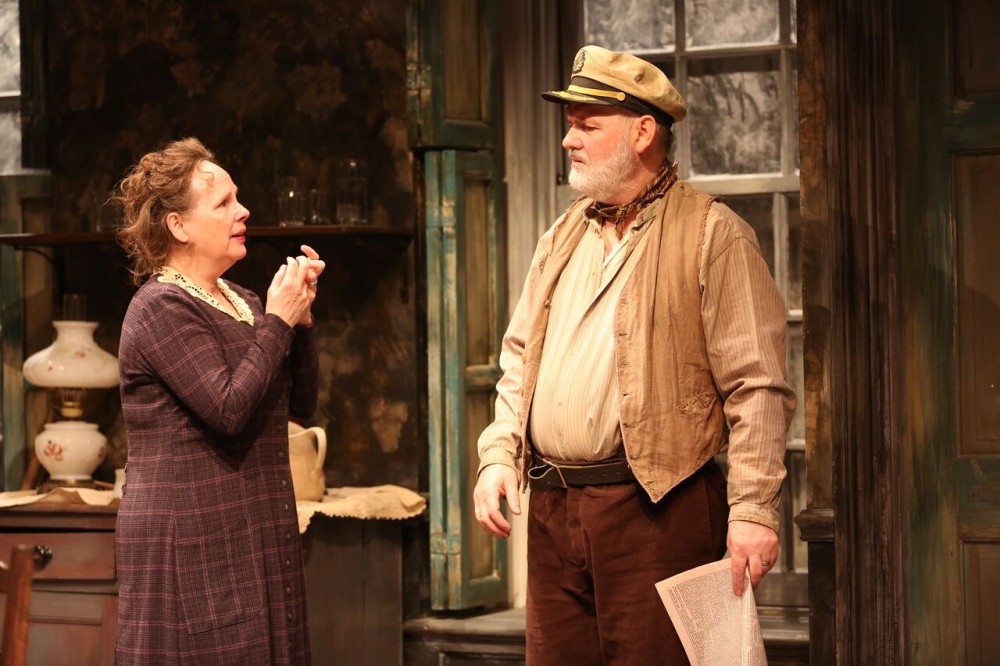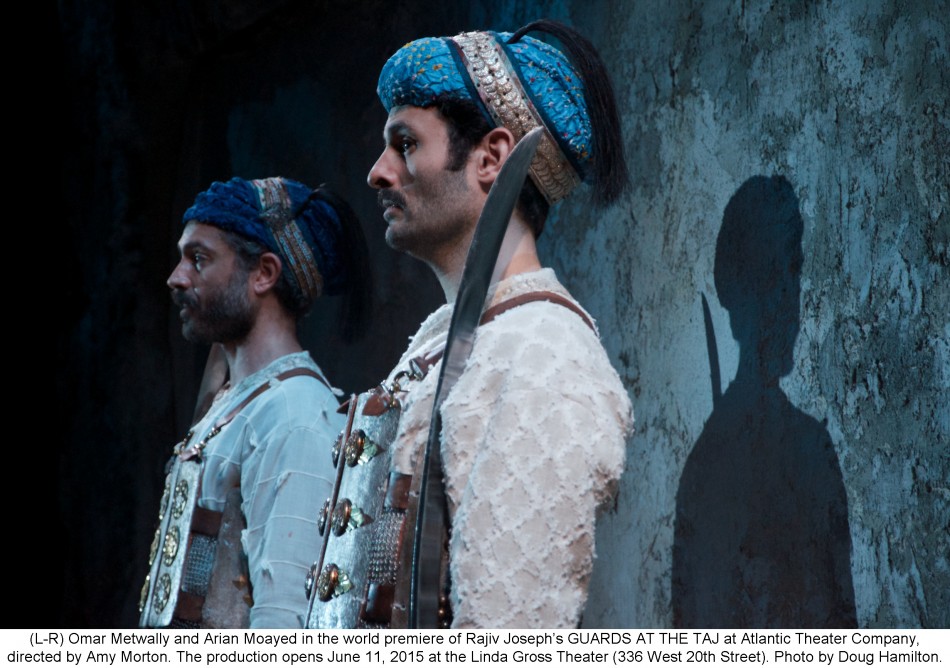By Marilyn Lester
In the second of Sean O’Casey’s Dublin Trilogy, Juno and the Paycock, the Irish Repertory Theatre has tackled the playwright’s fierce realism head on and come up with a resounding winner. The ensemble cast turned in performances of award-winning caliber, managing the tricky business of balancing comedy with tragedy in just the right measure. Direction by Neil Pepe paid smart attention to the detail demanded by an O’Casey work––not an easy task, for O’Casey is all meat and no fat. Juno is densely packed with meaning via the text and in the playwright’s specific set requirements and stage directions.
Premiering in 1924, Juno and the Paycock’s popularity made it the first play at The Abbey Theatre to run for more than one week. The main characters, the Boyle family, occupy a claustrophobic two rooms in the same shabby tenement complex in which all the trilogy plays are set. The Boyles are a family in “chassis,” the word nominal head of the household, Captain Jack Boyle (Ciarán O’Reilly) uses for “chaos”––and chaos is what rings all around them. Following the Irish war for Independence, the setting for the previous play, The Shadow of a Gunman, Ireland is now embroiled in civil war. The turmoil of the Boyles is the turmoil of Ireland, no better symbolized than in the mantel clock turned face down––a symbol of time seeming to not exist amidst an unsure future.
The Boyles and their neighbors, whose lives touch inextricably upon each other’s, are aspects of the Irish character come to life. Juno (Maryann Plunkett) is so named by her husband because she “was born and christened in June. I met her in June; we were married in June an’ Johnny was born in June.” Her naming by O’Casey is no accident. Juno, a chief goddess in the Roman pantheon, represented all aspects of the life of women, especially married life and childbirth. Like Mother Ireland, Juno Boyle has great tolerance for the circumstances of her life and family, especially her near-do-well husband, the peacock. She refers to him so twice, early on in the play: “Oh, he’ll come in when he likes; strutting about the town like a paycock w’ith Joxer, I suppose.” and “I killin’ meself workin’, an’ he struttin’ about from mornin’ till night like a paycock.”
Jack Boyle, “Captain” by virtue of one trip made years ago as a seaman, is determined to sidestep reality. He’s aided and abetted in his avoidance of work and devotion to drink by crony Joxer Daly (John Keating), a feral, two-faced, irresponsible rat of a man, who, like Boyle, is adept at pompous speechifying and self-deception. The Boyle household is completed by son Johnny (Ed Malone), who, having lost an arm in the 1916 Easter Rising, bitterly figures he’s given enough for Ireland. Johnny suffers from PTSD, made worse when news breaks at the top of the play that comrade and neighbor, Bobbie Tancred has been killed. When Juno remarks “Everybody’s sayin’ that he was a Die-hard—thanks be to God that Johnny had nothin’ to do with him this long time.” it’s a sly signal that the chickens will come home to roost later. Daughter Mary (Sarah Street), a reader of Ibsen, somewhat vain and on strike from her job, has calculated ambitions to better herself. She easily throws over a suitor, Jerry Devine (Harry Smith), a stable and likeable trade union organizer, for the far too slick schoolteacher and law student, Charles Bentham (James Russell)––another action with far-reaching consequence.
It’s Bentham who’s the snake in the garden, the figure who brings the Boyles news of an inheritance that could potentially change their lives for the good. Through Bentham, the future looks bountifully rosy. Yet, it’s also Bentham, through the reality of his incompetence and true character, that advances the family to utter ruin. But before this, there’s a brief moment of jubilation. The family and neighbor Mrs. Maisie Madigan (Terry Donnelly) celebrate the impending good fortune with an evening of song. The festivities are interrupted, however, by the funeral procession of the murdered Bobbie Tancred and the appearance of the bereaved mother, Mrs. Tancred (Una Clancy), foreshadowing what will befall the Boyle household all too soon: Johnny’s worst fears come to reality. He’s later taken away by two Republican soldiers and shot dead for giving information that led to the murder of Mrs. Tancred’s son.
By play’s end, the Boyles have been completely undone. Johnny is dead; the flat has been emptied of every stick of furniture and Juno has left with the pregnant and abandoned Mary. Through all of this, the Captain and Joxer have been on a bender. They enter the empty flat barely able to stand. From his self-induced world of alcohol-fueled fantasy, the Paycock utters the last words of the play: “The whole world’s in a terrible state of chassis.”
In 1924 when Juno and the Paycock debuted, not only was there civic disorder in Ireland but the influence of the Roman Catholic Church was a strong force to gird against troubles. Where Juno takes solace from the Blessed Virgin, the Captain rejects the Church and its influence. It’s a position that O’Casey himself held. The characters, with their follies, strengths, weaknesses and capacity for endurance, offer a personal view of Irish life. These 95 years on, some elements no longer startle or shock, but the themes of wasted potential, extreme loss and the abstracts of principal versus practical reality remain true.
Rounding out the ensemble, Rory Duffy, Meg Hennessy, Robert Langdon Lloyd and Michael Mellamphy provided excellent and strong supporting performances.
Juno and the Paycock runs through March 28 and then again, in repertory, from April 2 through 14 and May 11 through 25 at the Irish Repertory Theatre, 132 W. 22St., NYC, 212-727-2737, www.irishrep.org

























